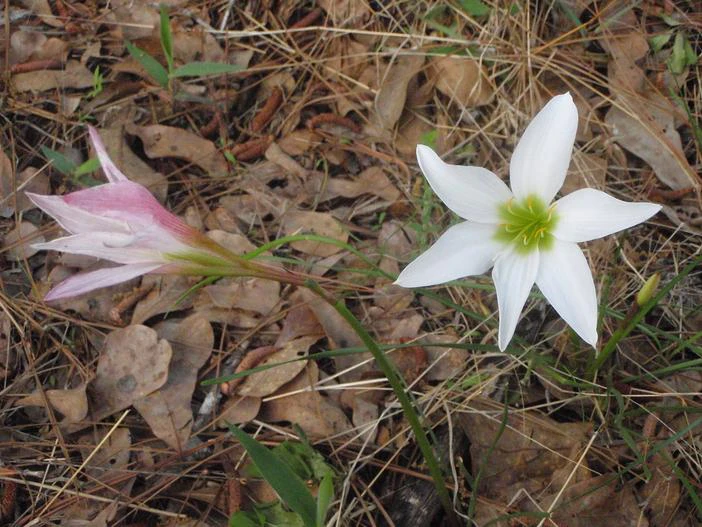Rain Lily
(Zephyranthes treatiae)
Rain Lily (Zephyranthes treatiae)
/
/

John S. Quarterman
CC BY 2.0
Image By:
John S. Quarterman
Recorded By:
Copyright:
CC BY 2.0
Copyright Notice:
Photo by: John S. Quarterman | License Type: CC BY 2.0 | License URL: https://creativecommons.org/licenses/by/2.0/ | Uploader: faul | Publisher: Flickr










Estimated Native Range
Climate Requirements for Williston, North Dakota
| This Plant | Your Site | Plant Suitability for Your Location | ||
|---|---|---|---|---|
| • Precipitation | 35" - 62" | 14" | Your precipitation may be insufficient for this plant. Irrigate N" / year. | Irrigate N" / year |
| • High Temp. | 89°F - 93°F | 85°F | OK, but your summers are milder than normal for this plant | OK |
| • Low Temp. | 16°F - 53°F | -1°F | Your winter temperatures may be too cold for this plant | Too cold |
This plant should grow well at your location with about N inches per year (Y minutes per month) of irrigation.
Summary
Zephyranthes treatiae, commonly known as Rain Lily, Zephyr Lily, or Fairy Lily, is a perennial herb native to the Southeastern United States, particularly thriving in open woodlands, grassy areas, and along stream banks. It is often found in moist meadows and forest openings, usually on clay soils. This species grows at a moderate rate to a height and width of 0.5-1 feet (0.15-0.3 meters). The Rain Lily features narrow, grass-like leaves and produces white, showy flowers with six petals that bloom in response to rain during the summer and fall, creating a striking display in the garden.
The Rain Lily is valued for its ability to naturalize and provide bursts of color after rainfall. It is ideal for mass plantings in borders, rock gardens, and as a ground cover. It is also suitable for container gardening and can be used in water-wise landscapes due to its adaptability to wet conditions. While it prefers full sun or part shade, it is adaptable to a range of light conditions. The plant thrives in medium draining loam or clay soils and requires medium amounts of water, mimicking its natural habitat’s moisture levels. It is relatively low maintenance, but gardeners should be aware of potential bulb rot if the soil is too wet.CC BY-SA 4.0
The Rain Lily is valued for its ability to naturalize and provide bursts of color after rainfall. It is ideal for mass plantings in borders, rock gardens, and as a ground cover. It is also suitable for container gardening and can be used in water-wise landscapes due to its adaptability to wet conditions. While it prefers full sun or part shade, it is adaptable to a range of light conditions. The plant thrives in medium draining loam or clay soils and requires medium amounts of water, mimicking its natural habitat’s moisture levels. It is relatively low maintenance, but gardeners should be aware of potential bulb rot if the soil is too wet.CC BY-SA 4.0
Plant Description
- Plant Type: Herb
- Height: 0.5-1 feet
- Width: 0.5-1 feet
- Growth Rate: Moderate
- Flower Color: Pink, White
- Flowering Season: Spring, Summer, Winter
- Leaf Retention: Deciduous
Growth Requirements
- Sun: Full Sun, Part Shade
- Water: Medium
- Drainage: Medium
Common Uses
Border Plant, Butterfly Garden, Low Maintenance, Water Garden
Natural Habitat
Native to open woodlands, grassy areas, and along stream banks in the Southeastern United States
Other Names
Common Names: Zephyr Lily, Fairy Lily
Scientific Names: Zephyranthes treatiae, Amaryllis treatiae, Atamasco treatiae, Atamosco treatiae, Hippeastrum treatiae, Zephyranthes atamasca var. treatiae, Zephyranthes atamasco var. treatiae
GBIF Accepted Name: Zephyranthes treatiae